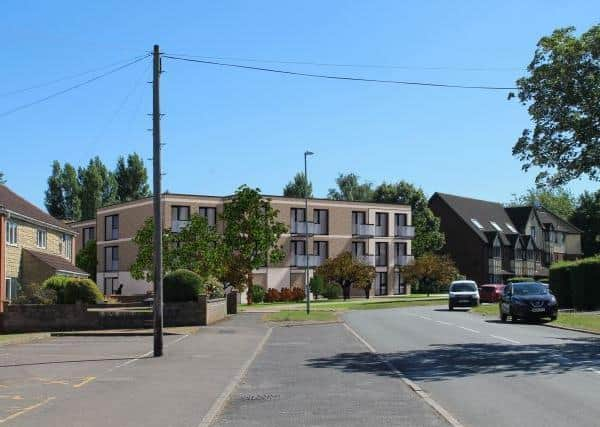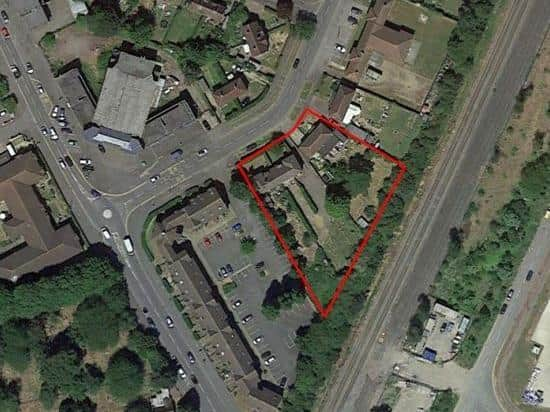Plan to build block of flats on Corby's historic Stevie Way are resurrected


Planners at Corby Borough Council, Anglian Water and Northamptonshire County Council were among the bodies that raised concerns about the scheme when it was first submitted as a 54-flat blueprint last year.
Issues included worries over the flooding risk, the site's proximity to the railway line, the fact the flats did not meet minimum space requirements and concerns that fire engines and bin lorries would not be able to access the car park.
Advertisement
Hide AdAdvertisement
Hide AdStephenson Way was only the second street to be built as part of New Corby in 1934.


Now the developement firm - run by well-known Corby businessman Ped Celebicanin - has scaled-down the plans and asked Corby Council to reconsider them.
Instead of five storeys, there will now only be four storeys on one building and three one another. The three-storey block will front on to Stephenson Way.
The size of the flats has been increased to 50m2, which is the minimum size for a one-bedroom, two person flat.
Advertisement
Hide AdAdvertisement
Hide AdNumbers two to 12, Stephenson Way would be demolished to make way for the scheme.


Papers submitted to the council by AP Properties Consortium state: "The existing dwellings are in a poor state of repair, which detracts from the residential amenity locally and whilst not large, the existing dwellings sit in substantial plots.
"Whilst Stephenson Way is predominantly an area of low density dwellings, the site is adjacent to the more densely developed Rockingham Road, and Rockingham Mews directly next door in particular, and proposals for the redevelopment of the former Odeon Cinema site into residential apartments are under consideration.
"The proposals here are for properties which provide for the needs of individuals and couples in comfortable, modern, energy efficient dwellings which are well placed for good local amenities and public transport links."
Advertisement
Hide AdAdvertisement
Hide AdYou can view the documents and comment on them hereThe History of Stephenson Way


- During the winter of 1933, hundreds of men working at the new Corby works had nowhere to sleep so bedded down in the hedgerows of Stanion Lane.
- Steelworkers had told bosses that they would prefer to be housed as close to the works as possible, despite the fact this meant that Stephenson Way would be in the prevailing winds polluted by the works.
- Stephenson Way was only the second street to be built in New Corby for steelworkers, just a few months after Bessemer Grove was completed.
Advertisement
Hide AdAdvertisement
Hide Ad- Building by Stewarts and Lloyds was completed in 1934 - it cost £306,405 using a 90 per cent loan from the Halifax Building Society.
- Rents were fixed at eight, nine and ten shillings per week, not including rates.
- No sooner were they finished than it was realised that more homes would be needed.
- On May 10, 1941 the street was the target of a German bomber trying to escape a British fighter plane by dropping bombs to lighten its load. There were no serious injuries, but Mrs McConnell was ‘blown out of bed.’
Advertisement
Hide AdAdvertisement
Hide Ad- The street is named after George Stephenson, an English civil engineer considered to be the ‘father of the railways.’ Other surrounding streets are named after renowned engineers whose inventions all played a part in improving steelmaking - Scottish mechanical engineer James Watt, Sir Joseph Whitworth who created a standard for screw threads, and Scotland’s Thomas Telford, the godfather of civil engineering.